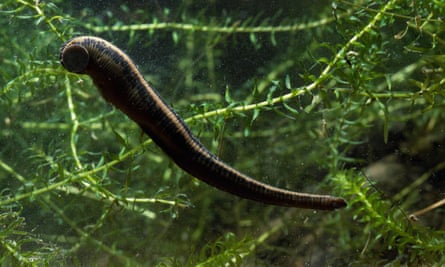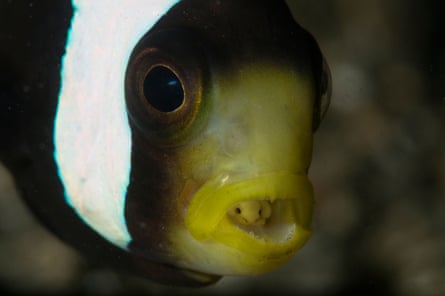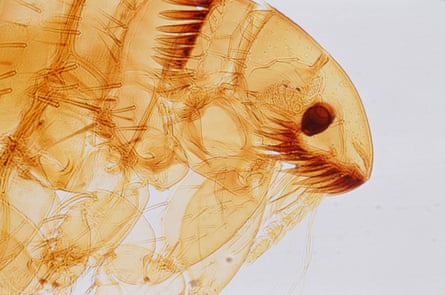The leech craze of the 1800s put parasites on the map. Collectors (usually women and sometimes old horses) would stand in ponds waiting for medicinal leeches to come and suck their blood. They were then picked off and sold for bloodletting.
The parasites were so popular that by the early 1900s they were nearly extinct, and there was a coordinated effort to save them. Even so, the European medicinal leech, Hirudo medicinalis, has been labelled as near threatened on the IUCN red list since 1996, and remains one of the few parasites with formal protections.

Only 4% of known parasites infect humans but it is no surprise that these freeloaders are not in favour. Conservation funding tends to follow charismatic creatures, and ticks, tapeworms and fleas are not good PR for parasitism. Malaria, which is caused by a bite from a mosquito infected by the plasmodium parasite, killed an estimated 408,000 people in 2018.
“It’s not the sort of thing WWF or Conservation International is going to be doing work on,” says Colin Carlson, a biologist at Georgetown University in the US who has just published a paper in the journal Proceedings of the Royal Society B arguing for a global parasite project to record parasitic life on Earth.
Parasitism refers to a type of ecology – or lifestyle – where a living thing feeds off a host. Because parasites hide in hosts, they are difficult to study (often you do not know they are there) so it was assumed they were not that important and probably did not have much impact on overall food chains. More recent research has shown that this assumption is wrong, as parasites significantly alter food chains.
Increasingly, scientists are finding that parasites are puppet masters, shaping ecosystems by changing the behaviour of their host species. Research in California showed parasites were involved in 78% of links in the food chain. Rough estimates suggest there could be 80 million parasites, but only 10% have been identified.

Carlson says we know next to nothing about them. “When we think about plants and herbivores and carnivores, there are parasites operating on every part of that food web – they’re this kind of dark matter. There are these unaccounted for links and forces in the network that we often can’t quantify.”
Carlson believes conservationists underestimate public support and interest in parasites. “People assume that because they’re gross, there’s not going to be any interest,” he says. “And I think, actually, it’s quite the opposite … People like the idea that there’s this entire hidden world within animals that we know nothing about. People love frontiers, right? They love the deep ocean and deep space and there is a frontier inside every animal on Earth.”
The global parasite project could lead to half the world’s parasites being described in the next decade, researchers say. The project would start by bringing in taxonomists and training them to work together across different institutions and countries to create one huge joined-up collection.
Over the past few years, this approach has gained traction and funders are increasingly interested in “moonshot” endeavours to create global catalogues of life. Last year the Global Virome Project was set up to catalogue 85% of viral diversity within vertebrates to the tune of $1.2bn (GBP900m). The Human Genome Project, set up in 1990, was created to sequence and map all human genes.
For parasitology, the nature of the problem might also require an unprecedented effort. “Parasitism is arguably the most species-rich mode of animal life on Earth, and parasites likely comprise a majority of the undescribed or undiscovered species left to modern science,” researchers wrote in Carlson’s paper.
Understanding parasites is urgent because the climate emergency could wipe out one in three parasites, according to another paper, published in Science Advances in 2017. Parasites could be particularly vulnerable to climate breakdown and wildlife loss because they often require two or more host species to complete their life cycle. If parasite abundance declined, it would leave vacuums into which invasive parasitic species could thrive – potentially increasing the risk of disease spreading as they jump on to new hosts.

Parasites also have fascinating life cycles. For example, nematomorph parasites, known as horsehair worms, make their cricket hosts drown themselves in streams, at which point the worm wriggles out and completes its aquatic life cycle. A sea louse called Cymothoa exiguagets inside a fish’s mouth and feeds on blood from its tongue. The parasite then attaches itself to the withered tongue and feeds on blood and mucus in the mouth, while also replacing the function of the original tongue and helping the fish to grind food.
One of the first landscape-scale demonstrations of the importance of parasites came in 2011 with the eradication of rinderpest, which killed cattle, buffalo and wildebeest in Africa. Once it was eradicated, the abundance of herbivores increased dramatically in the Serengeti national park, where long-term monitoring was taking place. In turn, this increased the abundance of predators such as lions and hyenas, which hunted these herbivores. More grazing animals meant there was less fire and grassland ecosystems transformed into scrub.
Carlson says the “exploration narrative” of going into the jungle and looking for undiscovered species is probably not the approach these parasite-hunters should take, because a lot of these samples have already been collected.
“Museums are the home of basic science, especially in parasitology,” he says. “Everything that we know about where parasites are found, and how to tell the species apart, all of that comes from work that is carefully developed over months and years by scientists working with museum collection. And specifically by taxonomists who are this kind of dying group of scientists who are essential to basic science, but don’t necessarily have that flashy appeal of exploration.”
Many museum collections are chronically underfunded and understaffed, and even those with more funding are often not digitalised, which makes it hard to share information. Hundreds or thousands of parasite species have probably already been identified but are inaccessible to the wider community.

Parasites are tiny so it can take years of meticulous research to tell species apart. Carlson’s proposal is just a blueprint, he says. “I’m not starting anything – I have enough to do – it’s more sort of this question of … if someone wanted to do it how would they do it?”
Shaun Keegan, a disease ecologist from the University of Glasgow, who was not involved in the research, says a global parasite project would definitely help monitor potential health threats to humans and livestock. “The hypothetical project is certainly ambitious. That being said, there is no reason as to why one shouldn’t be ambitious,” he says.
“The authors rightly highlight comparable large-scale projects such as the production of the famous black hole image that would have seemed impossible not so long ago. I would also cite the mass mobilisation of scientists the world over in response to Covid-19 as an example of how seemingly insurmountable problems can be overcome.
“The benefits to accruing such a database will allow us to explore new areas of research and inform us about disease in a changing world.”
Find more age of extinction coverage here, and follow biodiversity reporters Phoebe Weston and Patrick Greenfield on Twitter for all the latest news and features